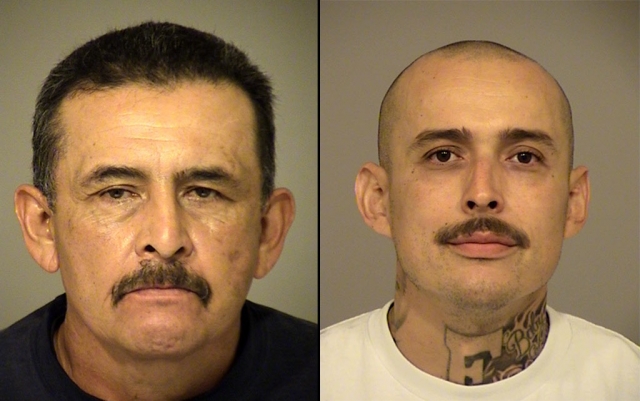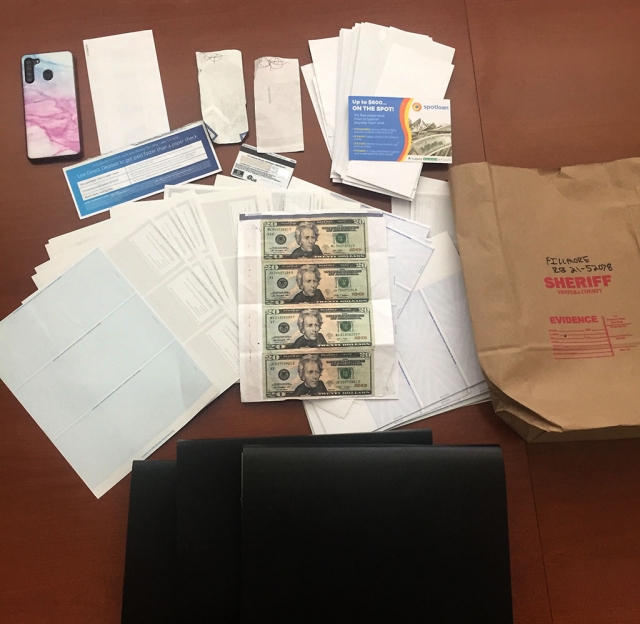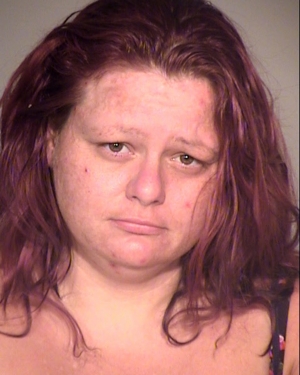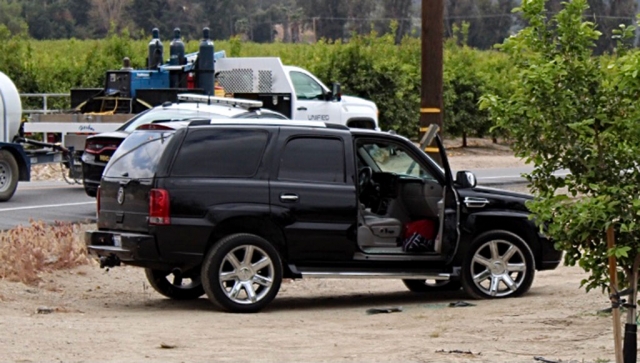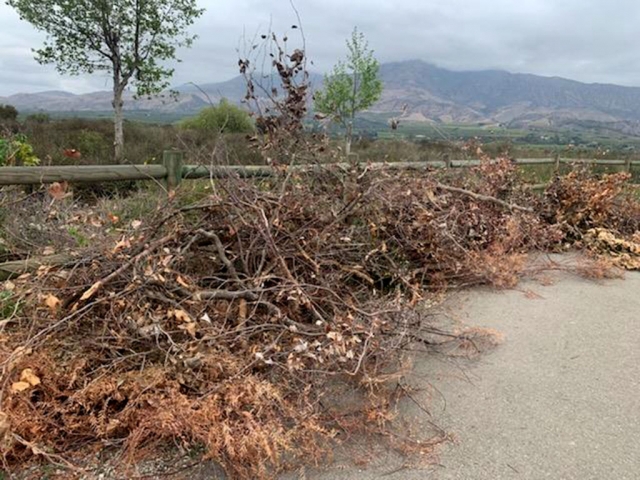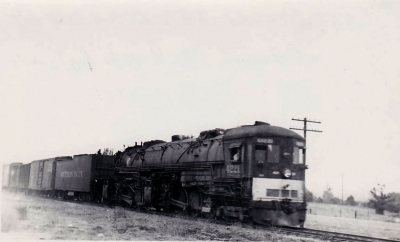|
By Ventura County Sheriff Department — Wednesday, April 28th, 2021
Two men were arrested for stabbing a victim causing major, but non-life threatening injuries. The injuries required extensive suturing to close the wounds. One of the men arrested is a known Fillmore gang member. On March 20, 2021 at 7:00 pm, deputies responded to a family disturbance in the 800 block of Blaine Avenue in Fillmore. Deputies located evidence that a fight had just occurred at a family gathering. At one point, two suspects attacked the victim with a knife. Prior to deputies arriving on scene, the suspects’ fled, and the victim was transported to a nearby hospital by ambulance for medical treatment. Detectives located additional evidence and witnesses identifying the suspects as Alfred A. Chaveste and Nicholas Guevara. Guevara is a known Fillmore gang member and a convicted felon who currently resides in the area of Bakersfield. Chaveste is a resident of Fillmore. On April 6, 2021, detectives located and arrested Chaveste in the 700 block of Akers Street in Fillmore. Additional evidence was collected pertaining to the crime and Chaveste was taken into custody. Chaveste was subsequently booked into custody at the Pre-Trial Detention Facility for Assault with a deadly weapon and Criminal Conspiracy. Chaveste was released from jail after posting bail which was set at $30,000. On April 20, 2021, detectives served a search warrant at Guevara’s residence located in the 4200 block of Charter Oaks Avenue in Bakersfield. During the service of the search warrant, additional evidence was located linking him to this crime. In addition, a Glock 9mm handgun with loaded gun magazines were located in Guevara’s bedroom. The handgun was seized as evidence due to the fact Guevara is prohibited from possessing weapons because of his prior felony conviction. Guevara was taken into custody and he was subsequently booked at the Ventura County Pre Trial Detention Facility for Assault with a deadly weapon and Criminal Conspiracy. Guevara remains in custody with his bail set at $30,000. His next court date is set for April 22, 2021. Anyone with information pertaining to this crime is urged to contact Detective Salas at the below listed number. The reporting party may remain anonymous. Join us in the fight on crime by following us on Twitter @VENTURASHERIFF, Facebook, Instagram @ VCSHERIFF, and with Nixle by texting your zip code to 888777 to receive local law enforcement and public safety alerts and advisories. The Fillmore Police Department encourages citizens to immediately report suspicious people and vehicles, and to promptly report any crime they come across by calling 911. The Ventura County Sheriff’s Office would like to thank members of the public for their on-going support and due diligence in providing information to assist our agency in solving crimes. We are better at what we do because of our community partnerships. Prepared by: Sergeant William Hollowell Ventura County Crime Stoppers will pay up to $1,000 reward for information, which leads to the arrest and criminal complaint against the person(s) responsible for this crime. The caller may remain anonymous. The call is not recorded. Call Crime Stoppers at 800-222-TIPS (8477). |
|
By Ventura County Sheriff Department — Wednesday, April 28th, 2021
32-year-old Santa Paula resident was arrested for stealing mail, attempting to cash stolen checks, and possession of several “washed” checks. On April 19, at approximately 4:00 p.m., deputies responded to a report of a theft of mail in the 12000 Block of Koenigstein Road, Santa Paula, Ca. The victim reported that his outgoing mail was stolen from his mailbox, included in the stolen mail was an envelope that contained a check. After the theft, the victim’s bank alerted him that someone attempted to fraudulently cash the stolen check. The Fillmore Detective Bureau quickly followed up on this case. Detectives were able to identify the suspect as Emily Randles also known as Emily Gholson, a resident of Santa Paula. Randles has a history of theft and drug related arrests. Randles was taken into custody for several felonies and was subsequently booked at the Pre-Trial Detention Facility for Identity Theft, Possession of Stolen Property, and Forgery. Randles remains in custody with her bail set at $50,000. Her next court date is set for 04/27/2021. Anyone with information pertaining to crimes of this nature are urged to contact Detective Salas at the below listed number. The reporting party may remain anonymous. The Fillmore Police Department encourages citizens to report suspicious people and vehicles, and to report any crime they come across by calling 911. The Ventura County Sheriff’s Office would like to thank members of the public for their on-going support and due diligence in providing information to assist our agency in solving crimes. We are better at what we do because of our community partnerships. Join us in the fight on crime by following us on Twitter @VENTURASHERIFF, Facebook, Instagram @VCSHERIFF, and with Nixle by texting your zip code to 888777 to receive local law enforcement and public safety alerts and advisories. Please remember that Postal Inspectors across the country work hard to protect your mail. However, with deliveries to more than 100 million addresses, the Postal Inspection Service cannot do the job alone. You can protect your mail from thieves by remembering to pick up your mail promptly after delivery. Do not leave it in your mailbox overnight. If you are expecting checks, credit cards, or other negotiable items, ask a trusted friend or neighbor to pick up your mail. This diligence will assist in the prevention of becoming a victim of identity theft. If you see or suspect a mail thief at work, or if you believe your mail was stolen, call police immediately 9-1-1, then call Postal Inspectors at 877-876-2455 and (press 3) or visit the below link. www.postalinspectors.uspis.gov/investigations/mailfraud/fraudschemes/mai... Prepared by: Detective Sergeant William Hollowell Ventura County Crime Stoppers will pay up to $1,000 reward for information, which leads to the arrest and criminal complaint against the person(s) responsible for this crime. The caller may remain anonymous. The call is not recorded. Call Crime Stoppers at 800-222-TIPS (8477). |
|
By Anonymous — Wednesday, April 28th, 2021
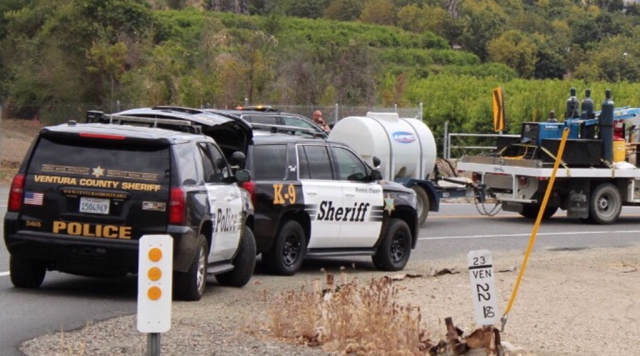 On April 22nd at 1:02pm, Ventura City Police Department was dispatched to a stolen vehicle located at Wells Road and Cirus Drive in Ventura. At approximately 1:45pm CHP was behind the stolen vehicle on Ventura Street and A Street in Fillmore. Four minutes later vehicle was eastbound at Ventura Street and Mountain View. At 1:59pm CHP were in pursuit, with subject located westbound at Guiberson Road, passing Auto & Sons Nursery. CHP had spike stripes deployed after canceling the pursuit due to pursued vehicle driving on wrong side of the road at 80 MPH. A Ventura County Sheriff’s Department unit spotted the vehicle southbound on Guiberson and a VCSO unit advised dispatched if their unit could take over pursuit, according to a VCSO watch commander. Stolen vehicle stopped in front of Elkins Ranch and subject fled on foot, northbound towards orchards, and a perimeter was conducted. A Ventura County Sheriff’s Department helicopter was on scene in the area attempting to locate the suspect. During the search a subject was detained by CHP. VCSO handed scene back to CHP. No information was made available on the subject arrest. Info courtesy Ventura County Sheriff’s Department West County traffic. Photos courtesy Angel Esquivel-AE News. Enlarge Photo |
|
By Anonymous — Wednesday, April 28th, 2021
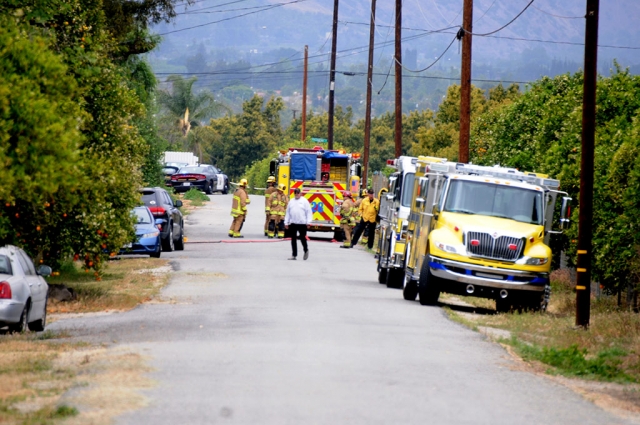 On April 24, 2021, at noon, a tan Buick sedan crashed into a 500 gallon propane tank in the 1000 block of Owen Street, Bardsdale. The collision ruptured the tank, and an evacuation of residents was ordered by the Fillmore Fire Department. CHP set up a temporary roadblock, according to sources. No injuries were reported, and the situation was safely resolved by agencies on the scene. Enlarge Photo |
|
By Anonymous — Wednesday, April 28th, 2021
Live in the Heritage Valley (Santa Paula, Fillmore, Piru) and need a ride to get your COVID vaccine? For a limited time, Valley Express is offering FREE rides on their Dial-A-Ride service to your vaccination appointment. Simply call 805-933-2267 to schedule your DAR trip after you secure your appointment. This service is not available for drive through vaccine appointments. Courtesy County of Ventura Facebook Page. |
|
By Anonymous — Wednesday, April 28th, 2021
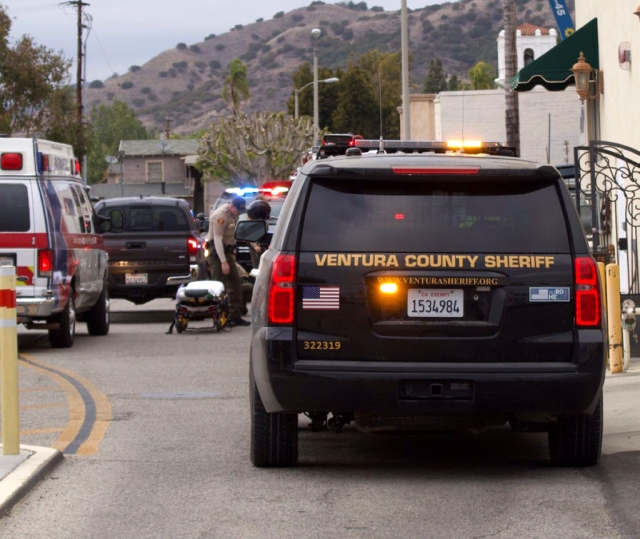 On Thursday, April 21, 2021 at 5:31pm, Fillmore Police Department, Fillmore Fire and AMR paramedics were dispatched to a vehicle versus pedestrian located in the alley east of Fillmore PD station. Arriving crews found a young patient on the ground with a bike down. Patient was treated by AMR and transported to a local hospital. Condition of the patient unknown. Fillmore Police Department units remained on scene to investigate the incident. Cause of the collision is under investigation. Photos courtesy Angel Esquivel-AE News. Enlarge Photo |
|
By Ventura County Sheriff Department — Wednesday, April 28th, 2021
The Fillmore Police Department will be hosting a program to educate newly licensed and future licensed drivers. Start Smart is a cooperative effort between the California Highway Patrol, Fillmore Police Department, teenage drivers, and their parents. In an attempt to remain proactive and not reactive, the Start Smart Program is designed to help young drivers and their parents/guardians understand the responsibilities associated with driving a motor vehicle. Start Smart will show how a poor choice behind the wheel can change the lives of everyone involved. Our goal is to raise awareness and reduce the number of teen-related injuries and deaths due to collisions. Interested parents are asked to call the Fillmore Police Department at 805-524-2233 or email RobertG.Thomas@Ventura.org for more information and to make a reservation; space is limited. There is no charge to attend the program. Due to Covid-19 health and safety guideline, this course will be offered online, via Microsoft Teams. Parents/child will have the ability to participate in the class from the safety of their homes and still be able to interact with the deputies presenting the course. This course will also be available in Spanish during the same allotted date/time as mentioned above. The Fillmore Police Department would like to thank the Fillmore Unified School District and Fillmore High School administration for their assistance so that students may use school-issued laptops to attend the class. The funding for this program is being provided by a grant issued from the California’s Office of Traffic Safety (OTS). Nature of Incident: Start Smart Driving Education Class |
|
By Anonymous — Wednesday, April 28th, 2021
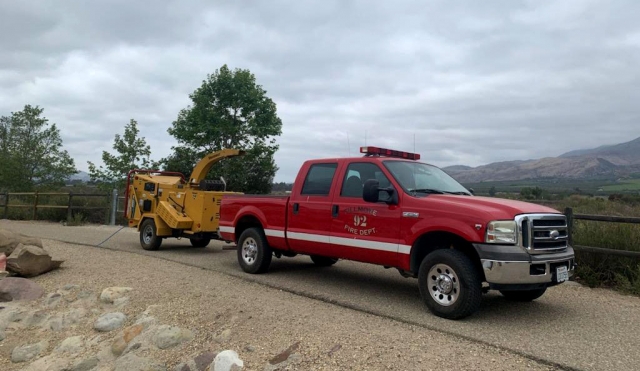 Fillmore City Fire crews were out working on local bike paths, clearing away overgrown brush last weekend. Pictured is one of the vehicles pulling a woodchipper. Enlarge Photo |
 The Fillmore Hotel, which was one of many building that was damaged in the 1994 Northridge earthquake. Photos courtesy Fillmore Historical Museum. Enlarge Photo By Anonymous — Wednesday, April 28th, 2021
Courtesy Fillmore Historical Museum Do you remember the earthquake? For most in Fillmore that question would seem to refer to the 1994 Northridge Earthquake which devasted our downtown area, leaving vacant lots seen even today. But that was by no means the only quake to cause damage to our town. July 12, 1952, at 4:52 am, the Tehachapi Quake hit in a series of waves which lasted in diminishing strength for nearly 45 minutes. The damage here in Fillmore was noticeable but relatively light. There was firewall damage on roof at 340-340 1/2 Central Avenue (formerly Ragtyme Station). Ballard Furniture at 348 Central Ave. was also damaged. The train line through Fillmore suddenly became important once more after the Tehachapi quake. Train tunnels were caved in, the Ridge Route was blocked by a king-sized landslide. Trains were diverted through Fillmore for a time while the tracks were repaired. Fifty years ago, on February 9, 1971, a strong earthquake measuring 6.5 on the Richter Scale occurred in the Sylmar area of the San Fernando Valley. The shocks caused the upstairs wall of the Briggs Hardware Building (first known as Chili Franklin’s Pool Hall and Dance Hall when it was built in 1910) at 340 Central, to ripple and a large 70-foot chunk of bricks fell onto the roof of Martha’s, a dress shop just north at 344 Central (now Genesis Hair). An eye-witness later said when the brick mass hit Martha’s, the impact collapsed the roof and blew out the front windows. The store at 344 Central had to be rebuilt. The second story of 340 Central was so badly damaged it was removed. The second story had been a dance hall. The floor was left intact and is believed to still be there to this very day as part of a double ceiling. The Fillmore Hotel and the Filmore Citrus Association Packing House at A and Sespe had cracks in walls, but nothing major. Although the Fillmore Hotel survived the 1971 quake, In the 1994 quake it was destroyed. Luckily, and perhaps surprisingly, none of the school buildings suffered and damage from the 1971 quake. Several had already been taken out of service as class rooms under the Field Act which had been passed in 1933 after the Long Beach Earthquake, mandating that school buildings must be earthquake-resistant. Even these were not significantly damaged. As expected all the grocery stores in town had major clean up to do after the1971 quake. Aisles had to be cleaned as jars were thrown from shelves and damaged canned and boxed goods had to be disposed of. Enterprising high school students picked up some spare pocket money helping the store owners. Neither of these earthquakes were as devastating to our community and the 1994 Northridge Quake, but it’s good to remember that the 1994 quake was not an anomaly. We live in earthquake country and we are sure to have another one. The question is just when. |
 Deputies arrested Vargen for PC 32310 Possession of High Capacity Magazines and PC 30605(a) Possession of an Assault Rifle. Enlarge Photo By Ventura County Sheriff Department — Wednesday, April 21st, 2021
A check the wellbeing call results in the arrest of a 42-year-old Fillmore man for various weapons violations. On April 16, 2021, deputies received a call that Scott Vargen had been acting and talking in a bizarre manner. Deputies were told that Vargen had made statements about visualizing things and having messages sent to him. The reporting party was concerned about Vargen’s mental health wellbeing and notified law enforcement. Although the reporting party’s concern for Vargen’s wellbeing needed to be investigated, there was no immediate or imminent threat to the public. Deputies had the time to develop a plan, which included contacting the Ventura County Mental Health Crisis Intervention Team and requested their assistance. The Crisis Intervention Team (CIT) and deputies collaborated and conducted an investigation regarding these statements and behavior exhibited by Vargen. Deputies and CIT went to Vargen’s residence and spoke with him about his bizarre statements and behavior. During the interview, deputies learned that Vargen recently purchased several firearms. The deputies were able to inspect these firearms and determined one of the firearms was an illegal assault rifle. Vargen was in possession of several high capacity pistol and rifle magazines, in violation of California weapons regulations. Deputies arrested Vargen for PC 32310 Possession of High Capacity Magazines and PC 30605(a) Possession of an Assault Rifle. Vargen was booked at the Ventura County Main in lieu of $30,000.00 bail. The Fillmore Police Department would like to take this opportunity to express to the public if you see or hear something that is out of place or just not right, please say something. The adage of “See Something. Say Something.” relates to many different facets of our life. The Fillmore Police Department has access to many different resources and we can provide people with contacts to access those resources. Report Number: 21-50260 |

